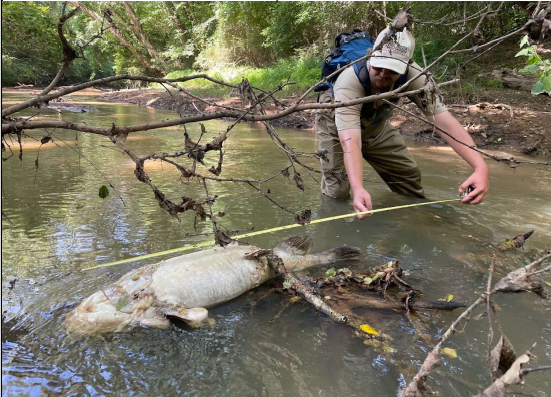Much remains a mystery: Here are the basic facts on soil amendments
A stench increasingly wafts over rural east Georgia communities and concerns grow among residents who question if its source — a controversial soil additive — is doing more harm than good.
The Georgia Department of Agriculture oversees soil amendments, a product made with industrial byproduct waste that’s being pitched to landowners as a cheap, even free, alternative to fertilizer. Though soil amendments are registered with the state, a lot remains unknown about the makeup of soil amendments and what contaminants they might harbor.
To address concerns, GDA recently approved new rules. But with a bill in the Georgia Legislature to give regulatory powers to local officials failing this year, and lingering doubts about the new rules’ effectiveness, Georgia communities don’t see their concerns or questions getting addressed.
Here's what you need to know about soil amendments:
From the source
Soil amendments can come from just about anything, from chicken meat processing facilities to industrial bakery operations. But in general, most of it goes through the same process to get to its liquid-like texture: dissolved air floatation (DAF).
This is a common process where wastewater, like what is used to washdown meat processing equipment, has air pushed through it that causes all the little particulates in the water to float to the top and are skimmed off. This process happens multiple times with finer and finer mesh screens until all that is left are the small pieces that make up the sludge-textured material that is soil amendments.
Wet predicament
The waste made into soil amendments is a challenge not only for companies producing the waste but for waste companies and agencies. Washdown water and DAF skimmings are too wet for a landfill — they don’t allow the landfill operators to stack waste in a way that still allows air flow, which is key for waste to decompose. But it’s also not fit for a wastewater treatment center.
Too wet for one, too chunky for the other.
What does it take to sell or distribute soil amendments?
Once the waste is made, a separate soil amendment company or contracted hauler comes and picks up the waste from the producing facility and transports it directly to the field.
To distribute soil amendments, companies must apply for a registration with the Georgia Department of Agriculture for each individual product. In that application, companies must provide:
Product name;
A Standard Industrial Classification or North American Industry Classification System code, which tells what specific industry produced the product;
A description of the soil amendment and the industry processes all the waste included in the amendment goes through;
The intended use of the product and the “suitable rates and frequency to site,” although most all applications simply state that the rates and frequency will be based on soil testing results that GDA doesn’t require or keep track of; and,
Lab testing of the product that looks for a slate of heavy metals and a few minerals.
What's in it?
The Georgia Department of Agriculture doesn't keep track of what facilities or producers soil amendment companies get material from, but using the registration documents, most soil amendments come from meat or other food-related industrial byproducts, like pet food or even salad dressing.
The agency requires testing for heavy metals and some minerals, but environmental advocates and neighbors argue this sampling regimen should be more aggressive. These tests don't include potential contaminants like industrial cleaners or solvents that could be in washdown water from industrial facilities or other industrial pollutants that are being found more and more often, such as PFAS, also known as the "forever chemical."

Spreading rules and regulations, lack of enforcement
For a long time, where the soil amendment was going was a mystery. Neighbors would keep track of where the trucks were setting up, spraying and then moving to every couple of weeks, but GDA didn't keep any records of what lands were receiving soil amendments.
Under the new rules GDA approved late last year, the soil amendment companies must keep records of the distributions, including the product, quantity, date and time, and contact information of the landowner who accepts soil amendments onto their property.
GDA doesn't keep these records, so they are not publicly available documents, but the law states companies must turn them over within three days if the agency asks to see them.
Investigations and enforcement
Neighbors who live next to where soil amendment is spread have filed nuisance complaints with GDA and the Georgia Environmental Protection Division for years, but there has been an uptick in those since last summer.
These complaints are handled by GDA unless there is concern that the soil amendment has caused environmental harm, like the fish kill that happened in Wilkes County last summer, in which case the Georgia Environmental Protection Division completes its own investigation.
This article originally appeared on Augusta Chronicle: Here are the basic facts on soil amendments
